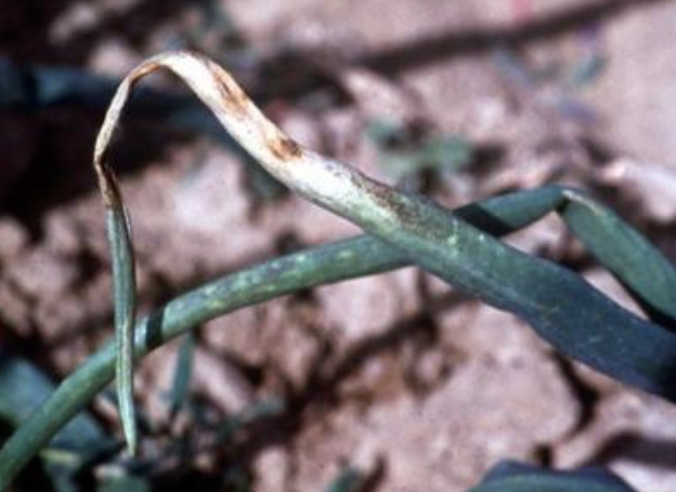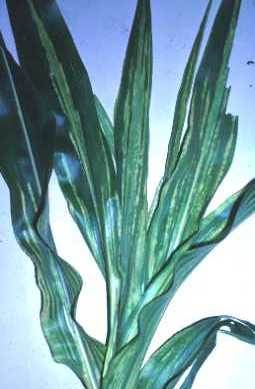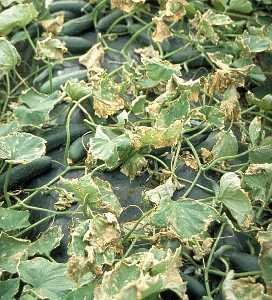Credits: Biovision-Infonet

(c) Judith K. Brown. Reproduced from the Crop Protection Compedium, 2004 Edition. (c) CAB International, Wallingford, UK, 2004.

(c) Courtesy EcoPort Mike Pearson

(c) Courtesy EcoPort Denis Persley and Tony Cooke, Department of Primary Industries and Fisheries, Queensland, Australia
It attacks young plants, appearing as white specks, usually confined to the oldest leaves of young plants. A greyish white mould develops rapidly in cool damp weather and progresses down the sheath, and plants eventually fall over and dry up. Optimum temperatures for fungal growth are between 13 and 20 degC. Because of the temperature requirements of the fungus, the disease is more serious in higher cooler areas.
The fungus survives in seeds, bulbs, sets, and on plant debris. Spores are carried long distances by air currents. The fungus can infect onion, Welsh onion, Egyptian onion, garlic, shallot, leek and possibly some other species of Allium.
What to do:
- Use healthy seeds or sets.
- Use resistant varieties, if available.
- Rotate at least 3-years free of onions or other Allium species (e.g. garlic).
- Wider spacing of plants help reducing humidity and downy mildew.
- Preventative treatments with rock powder can reduce the attack of this disease.
Downy mildew (Peronospora parasitica)– Effects Watermelon

(c) Clemson University – USDA Cooperative Extension Slide Series, www.insectimages.org.
Most downy mildew fungis require cool weather for reproduction and development. This is not true of the cucurbit downy mildew fungus. Optimum temperature for infection is at 16 to 220C. It can survive when temperatures are over 37.80C. The most critical factor for infection is a film of moisture and / or long dew periods on leaves. Disease spread is primarily through wind and rain splash. The fungusattacks only members of the cucumber family, mostly those that are cultivated, although it can infect wild cucumber and a few other weed hosts.What to do:
- Use resistant varieties, if available
- Leave wide spacing between plants
- Avoid overlap of cucurbit plantings
- Copper fungicides at 0.1 % can provide control (follow product label instructions)
- Copper fungicides at 0.1 % can provide control (follow product label instructions)